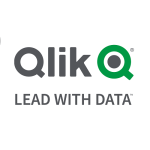What is our primary use case?
We use it for reporting, it's enterprise-wide reporting. There are tons of different things, some scheduled by MicroStrategy. Those old-fashioned reports, PDFs, Excel, and even portfolio and task stuff. Works for many industries now, different business lines, finance, supply chain, etc.
What is most valuable?
MicroStrategy has become an obsolete product. It might still be around for another 10, 15, maybe even 20 years, but I wouldn't recommend using it for any specific use cases. Unless you already have a MicroStrategy license, in which case it might be worth sticking with MicroStrategy for cost reasons. However, I wouldn't buy new MicroStrategy licenses.
What needs improvement?
There are definitely some drawbacks. The biggest one is the complete lack of a community around MicroStrategy compared to other BI tools. This can be a huge problem from an IT department head's perspective. If a developer gets stuck on some task, they might spend hours or even days trying to solve a problem because there's no helpful information online.
With tools like Tableau, Power BI, or Looker, you can easily find solutions and ask questions in forums or ChatGPT (OpenAI). It's almost impossible with MicroStrategy.
Another drawback is the lack of a talent pool. It's very difficult to find developers with MicroStrategy expertise. There are barely any online courses or tutorials available, and even searching for information can be frustrating. You won't find educational videos at the top of the search results; instead, you'll see stuff about Bitcoin investments. This lack of focus on development is a major downside.
I've been quite disappointed with MicroStrategy's investments in recent years, with them prioritizing discounts over research and development.
So, in terms of functionality, MicroStrategy is alright. It's a solid BI tool and can handle most tasks you'd expect. The problem lies outside the tool itself. You need a strong community to learn from and keep up with the rapid development of BI tools.
Unfortunately, MicroStrategy lacks that community support. You're either stuck figuring things out yourself or paying expensive fees to MicroStrategy consultants for help. This isn't the case with tools like Power BI or Tableau, where you can find experts readily available. In addition to other drawbacks, it's not cost-effective either.
The on-premise version used to be the only option, which meant buying licenses for CPU units. While cloud migration with SkyLink in MicroStrategy Cloud makes scaling easier, it still requires initial setup and configuration. This button with Azure or AWS can take a couple of weeks, depending on your data sources and desired outcomes. Compared to other solutions where you can start quickly and iterate, MicroStrategy's approach might be seen as slower and less agile.
For how long have I used the solution?
I have been working with this solution for ten years. I worked with the cloud version of MicroStrategy.
Buyer's Guide
MicroStrategy
September 2025
Learn what your peers think about MicroStrategy. Get advice and tips from experienced pros sharing their opinions. Updated: September 2025.
868,787 professionals have used our research since 2012.
What do I think about the stability of the solution?
I would rate the stability a seven out of ten because MicroStrategy is generally stable, but every new version seems to have bugs.
What do I think about the scalability of the solution?
For scalability, I would rate the standard on-premises version, I'd rate a two out of ten. But the cloud version is a seven out of ten.
In Europe, I know of around 700 organizations. The US will have much more.
How are customer service and support?
You can pay for customer service and get help with specific issues. They have different tiers of support, like first-line and so on. You submit a ticket and wait for a resolution. If it's simple, you might find some help. But for complex issues, they might just push it to the next product release.
So, overall, the support is pretty good.
How would you rate customer service and support?
Which solution did I use previously and why did I switch?
I currently use other tools like Business Objects, Power BI, SQL Server Reporting Services, and others.
I didn't choose MicroStrategy. It was already in place at my previous company, and I inherited it.
How was the initial setup?
It does require deployment, and with Azure's architecture, you need a central computing unit like MicroStrategy Intelligent Server. So, that must be installed and configured.
Once it is set up, you can start integrating data into it and building dashboards. Setting this up takes time, but it has the advantage.
The advantage of this approach is the enterprise scale of the solution. You have time to carefully consider your implementation and follow a more waterfall-style approach, eliminating and minimizing errors.
This is unlike some other solutions where you can start quickly with Excel files and move data into BI tools rapidly. While that's convenient for speed, it can lead to neglecting a solid, scalable approach for the future.
The deployment took around a couple of weeks. It takes around two weeks to configure everything. Moreover, setting up the project and defining the data sources and desired outcomes can also impact the timeline.
What's my experience with pricing, setup cost, and licensing?
The Azure part has a publicly available flat pricing structure. But for the on-premises version, you negotiate directly with MicroStrategy. They're often willing to offer significant discounts, up to 80% off the original price. The pricing list itself is not publicly accessible, so it's a bit opaque.
What other advice do I have?
Overall, I would rate the solution a five out of ten.
Which deployment model are you using for this solution?
Hybrid Cloud
If public cloud, private cloud, or hybrid cloud, which cloud provider do you use?
Microsoft Azure
Disclosure: My company has a business relationship with this vendor other than being a customer.

















